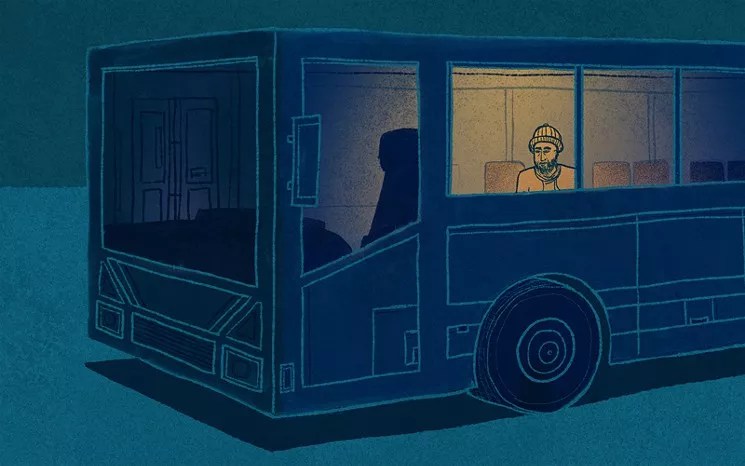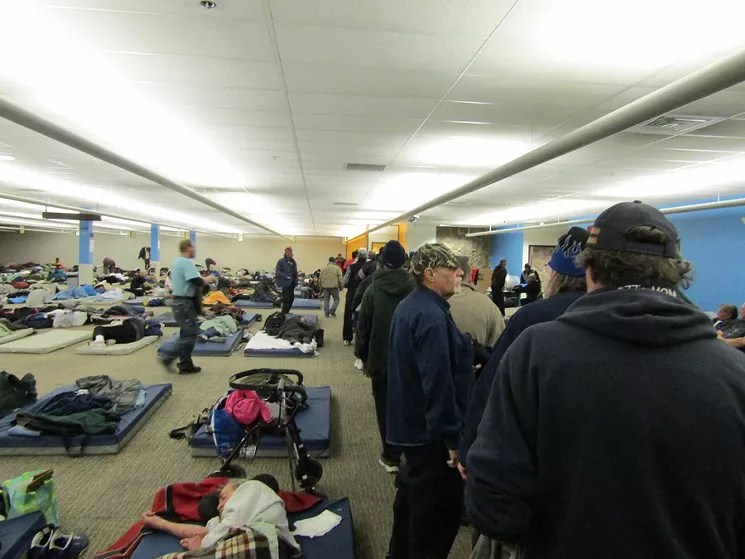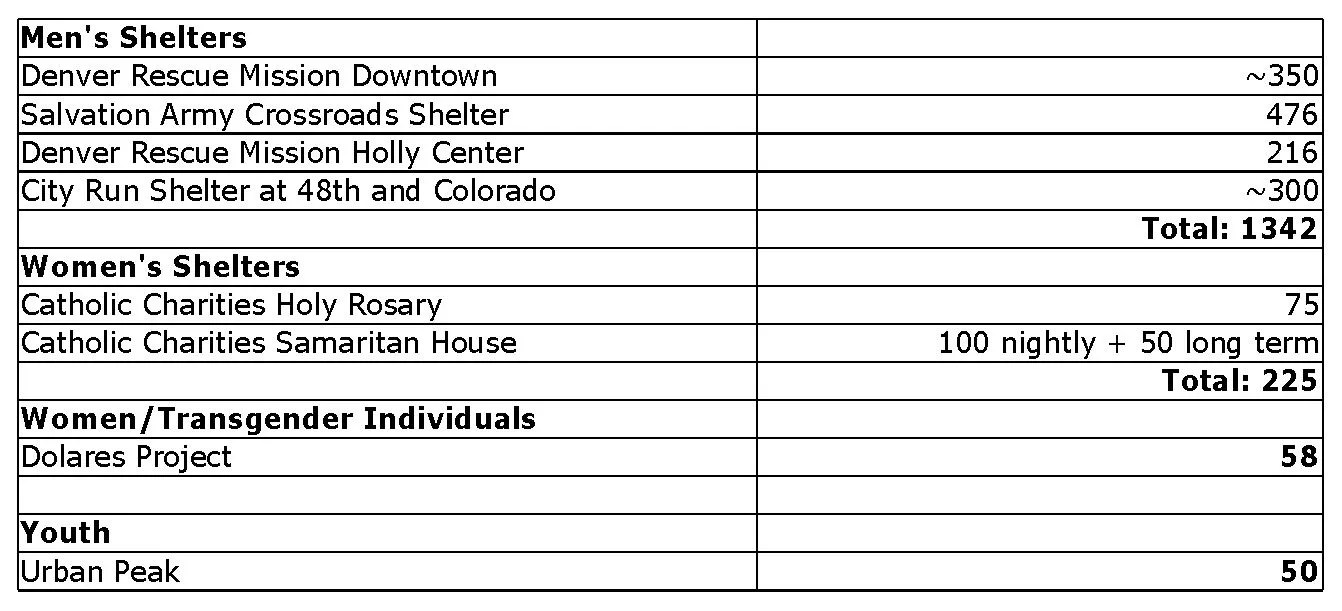
Westword

Audio By Carbonatix
The cold season is officially upon us, which might be exciting for some, including skiers and snowboarders. But snow and freezing temperatures mean something completely different to people experiencing homelessness, Denver’s most vulnerable citizens.
Denver usually sees the highest demand for shelter space between the months of November and April. As we start to experience the first snowstorms of the season, Westword checked in with the city to find out what shelter options are available during winter 2017-2018, and how those options may have changed from last season.
Chris Connor, the program administrator for Denver’s Road Home, is the city’s point person when it comes to coordinating the constellation of city-run and nonprofit-operated shelters in Denver. Connor says there are some significant changes in shelter options compared to last winter. Most notably, two nonprofits are offering new shelters for men and women, both located near Smith Road, which runs parallel to Interstate 70 in the industrial corridor of north Denver.
New Shelters:
In November, the Denver Rescue Mission will open a 216-bed facility called the Holly Center for men – the first permanent overnight men’s shelter to be constructed in Denver since 1989.
Denver, make your New Year’s Resolution Count!
We’re $13,000 away from reaching our $50,000 year-end fundraising goal. Your support could be what pushes us over the top. If our work has kept you informed and connected this year, please consider making a contribution today.
Catholic Charities has also opened a women’s shelter called Samaritan House along the I-70 corridor with a hundred emergency beds that are available on a night-by-night basis, and an additional fifty beds reserved for women who have committed to longer-term stays.
In addition to the new nonprofit shelters, the city’s own overflow shelter, which had previously been located at a former call center near I-70 and Peoria Street (read Westword’s feature story about an overnight experience there, called “End of the Road”), has moved. The new shelter – a converted 40,000-square-foot industrial warehouse – is located at 48th Avenue and Colorado Boulevard and opened this month. It does not yet have a name.

What the old “E-shelter” at Peoria Street looked like. The new shelter offers beds, not mats, according to the city.
Chris Walker
Connor says that there are some significant changes being made at the city’s new shelter. For one thing, the bedding at the warehouse on Colorado Boulevard has been upgraded; the new facility features beds for hundreds of men to sleep on, unlike the sleeping mats provided at the old shelter, which was colloquially known in the homeless community as the “Peoria E-shelter.” The city is also working with Denver Arts & Venues to install murals and artwork in the shelter, and will be soliciting a “design challenge” to figure out ways to accommodate common requests from shelter guests like having more electrical outlets for charging devices and providing storage space for bags and other items.
Because they are located in more remote locations in Denver compared to the homeless services in the Ballpark neighborhood near Park Avenue West and Lawrence Streets, the aforementioned shelters will be accessed by city-funded buses.
The buses will pick up overnight guests from homeless services located in the Ballpark neighborhood and drop them off at the same locations the next morning.
Existing Shelters:
There are also a number of existing overnight shelters that will continue to offer bed space this winter.
The Denver Rescue Mission’s downtown shelter, located on Lawrence Street, will continue to house around 350 men each night, says Connor.

Paul Sableman at Flickr
Meanwhile, the Holy Rosary shelter, which is run by Catholic Charities and located across Park Avenue from the Rescue Mission, has about 75 beds available for women.
Fifty beds for youth are available at Urban Peak, and 58 spaces, including ones for transgender individuals, at the Dolores Project.
The facility with the most uncertain future is the Salvation Army’s Crossroads Shelter, which is located near the South Platte River on 29th Street in RiNo and continues to host up to 476 men each night. This year, the shelter was found to have numerous fire-code violations, including dysfunctional sprinkler systems, inadequate bathrooms (fire department inspectors found that the facility was using porta-potties indoors), and blocked exits. The shelter has addressed enough issues to be able to run through this winter, Connor says, but there are rumors that the Salvation Army may sell the shelter next year rather than make additional, expensive repairs.
“We’ll be keeping the temperature on that next year,” Connor says about the possible sale of the Crossroads facility. He says that he’s coordinating conversations in January 2018 to figure out “what we need to do logistically if Crossroads pulls offline and Salvation Army decides to sell that property.”
By the Numbers:
The last “point in time” survey of individuals experiencing homelessness, conducted in January 2017, found that there were 5,116 homeless individuals in metro Denver. Of those, 1,039 were deemed “chronically homeless,” meaning that they were living in spaces deemed unfit for habitation and had been homeless for at least a year. These individuals tend to require shelter most frequently during the winter.
Connor stresses that, while the city provides shelter, Denver is moving more toward finding ways to house people experiencing homelessness in permanent spaces and is implementing shelter “diversion programs” – finding people alternatives to shelters – since shelters are a temporary fix.
“We’d much rather put people in housing than shelter, but we want to respond to the need that’s in front of us,” he says.
Connor says that there was still a lot of space in the shelter system during the early snowstorm on October 9. The city will continue monitoring demand throughout the winter.
Here’s what Connor says is available this winter:

Westword